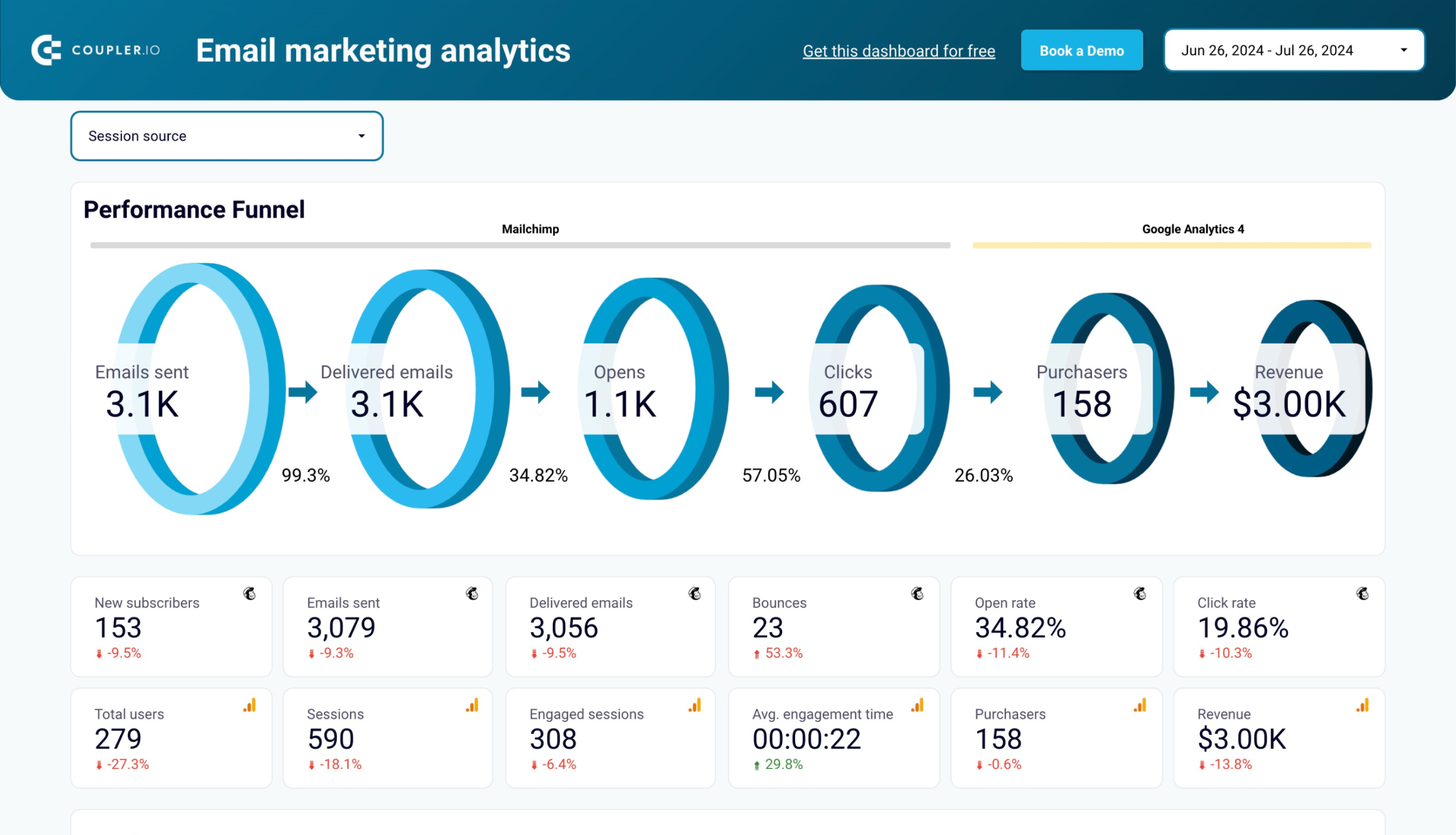Predictive Email Marketing: How to Forecast Engagement and Optimize Campaigns
Would you like to get a sneak peek into your subscribers’ minds to understand which of your email campaigns will be a huge success and which one isn’t even worth considering? Predictive email marketing is a great tool to learn more about your recipients and their future actions, add tailored content for an impeccable experience, and spot recipients ready to unsubscribe so you can prevent losing them.
In this blog post, we will explore how predictive email marketing works and why you need it, explain how to use it to get the most out of your recipients’ data, and share some tips on adding predictive models to your strategy.
What is predictive email marketing all about, and how it works?
Predictive email marketing involves gathering and analyzing your recipients’ data to predict their future behavior by creating email content tailored to their certain preferences and sending emails at the right time to enhance customer lifetime value.
Predictive analytics combines AI technologies, machine learning algorithms (ML), and statistical techniques to process patterns and trends in real time and historical data about your subscribers and predict likely outcomes. Your recipients’ past behavior (like their buying habits) and information about their locations, cultural backgrounds, marital status, and job titles will help predictive models segment your email list to make groups of recipients with various interests, purchase habits, and the stages of a sales pipeline.
Here is an example from the software as a service industry:
Awareness stage: The predictive model analyzes your subscribers’ historical data to forecast which white paper topic will generate the most conversions. After such analysis, each new subscriber will get a dynamically adjusted email with the most relevant white paper to download.
Consideration stage: You have a subscriber who uses a free trial, and you want them to upgrade to one of your paid plans. The predictive model will analyze their feature usage and session frequency to determine if this subscriber is likely to upgrade. Subscribers with a high potential to convert will get an email with success stories from customers who are already using more advanced features.
Conversion stage: Before renewal, the predictive model assesses customer behavior to forecast if they are ready to upgrade even further. If your subscriber is interested in the advanced functionality of your product, they will get an email with premium benefits and a unique upgrade discount.
Why do you need predictive email marketing? Statistics to consider
Now that you know what predictive email marketing is and how it works, let’s see what the numbers say about its effectiveness and impact.
- Based on the compiled statistics, open rates improve by 30% when subject lines are generated using AI and historical data analysis, while send-time optimization through predictive analytics increases conversions and engagement.
- A report by Salesforce states that the revenue impact of implementing predictive analytics is substantial — marketers confirm over 40% revenue influence three years after implementing it. Particularly, different predictive campaign types deliver varying ROI (per click):
- abandoned cart emails — $36.02
- back-in-stock emails — $13.03
- transactional emails — $8.32
- post-purchase emails — $5.93
- new arrival emails — $2.96
- The market of predictive analytics is growing rapidly — from approximately $17.5 billion in projected value for 2025 to an expected $100 billion by 2034.
- Forward-looking marketers recognize this trend — 78% of surveyed marketing experts plan to incorporate predictive analytics into all their marketing strategies.
How to use predictive email marketing to benefit from it?
Now let’s talk about the most effective ways to use predictive email marketing for your campaigns to strengthen relationships with your subscribers, predict their future actions, and identify potential leads.
1. Locate recipients ready to unsubscribe and prevent it
AI-powered predictive techniques can help you notice when a subscriber stops interacting with your emails in time to win them back. You can send them an email with a quick questionnaire — “Why did you stop reading our emails?” Based on their responses, you can tweak your strategy to reduce customer churn.
For example, if a recipient doesn’t like that you send too many promotional emails, send your content at night, or offer emails in a language that this person doesn’t speak — resolve these issues according to recipients’ specific preferences so that you can build lasting relationships with your subscribers.
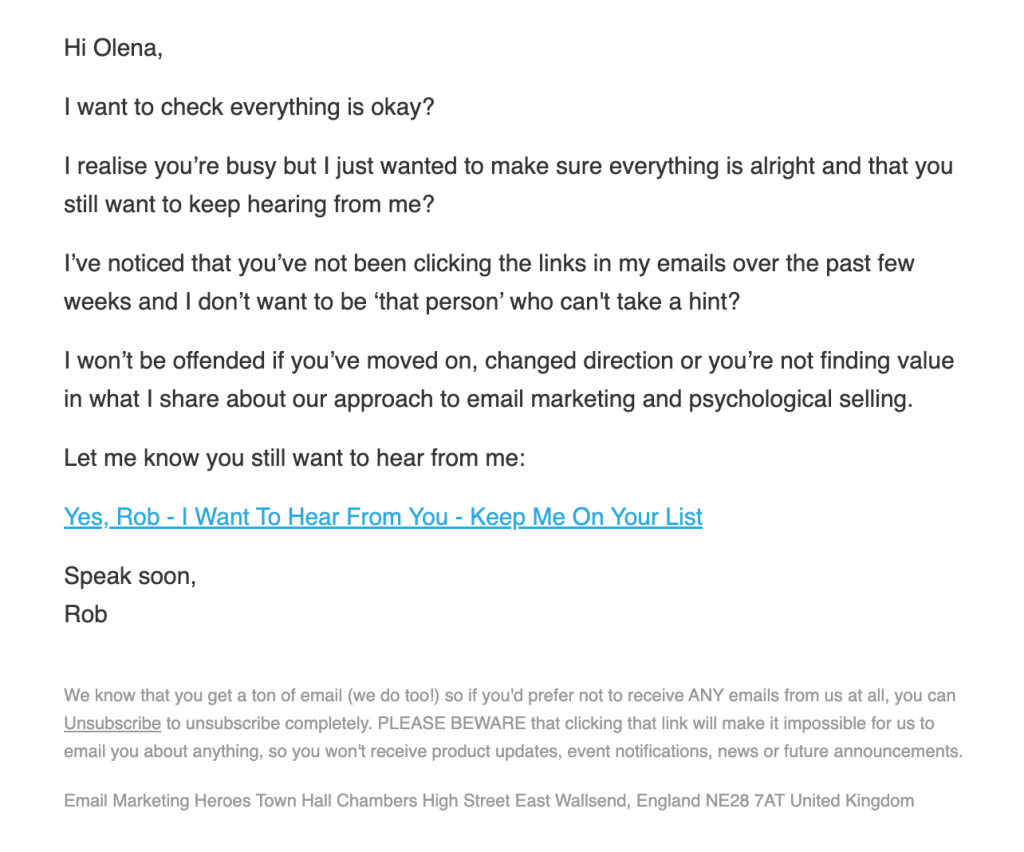
2. Learn more about your subscribers to make an unforgettable first impression
Welcome emails don’t have to be generic just because it’s your first interaction with a new subscriber. Such emails can be an amazing way to introduce your brand as it is, show subscribers what to expect from you (for example, tone of voice, offers, or educational information), and maybe encourage them to try out your products or services right away.
Predictive email marketing will come in handy here as you can analyze data related to where subscribers signed up for your newsletter to provide them with a relevant welcome sequence. For example, if you work in the finance industry and your new subscriber signed up after using your mortgage calculator, predictive models can forecast their interest in home financing and prioritize a welcome email sequence with tips to enhance their credit score or a mortgage program digest.
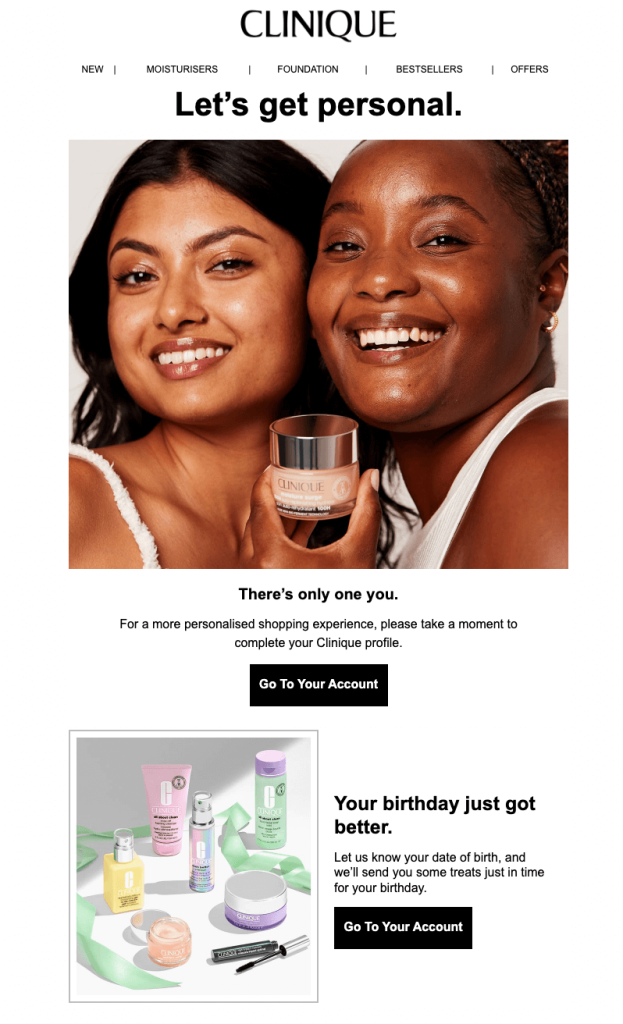
3. Implement personalized email content to provide a better experience
Emails tailored to recipients’ preferences and behavior earn a 29% open rate and a 41% click-through rate. Predictive email marketing can help you segment your email list more effectively to provide more personalized content according to your subscribers’ past actions and sales funnel stage.
Planning an email campaign for a clothing store? Use predictive models to analyze customers’ browsing behavior and external factors like weather changes or trends in fashion to forecast what people are more likely to buy next, and adjust your offer accordingly. It can include offering free shipping to high-intent customers or a bigger discount for those who need more motivation to place an order.
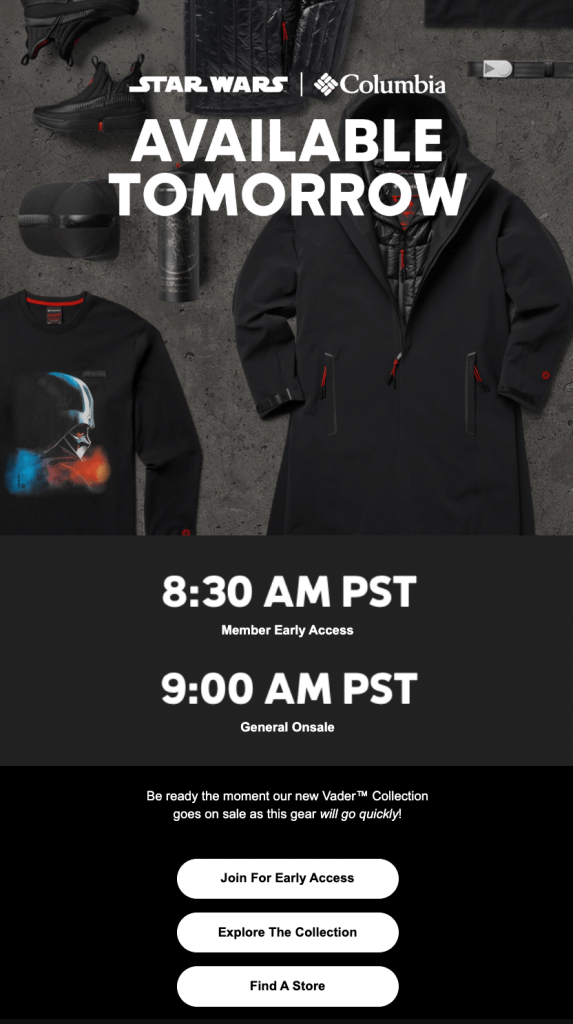
4. Analyze your subscribers’ behavior and preferences to benefit from dynamic content
Besides using historical data and analyzing subscribers’ past actions, predictive email marketing can help you analyze real-time data to offer content that appeals to your audience’s preferences. Analyze how recipients react to your emails and what content they interact with.
For example, if a group of recipients often clicks on offers with mountain getaways and your predictive model spots a rising trend in winter sports bookings, your next email can offer subscribers winter hiking equipment or a stay at a ski resort.
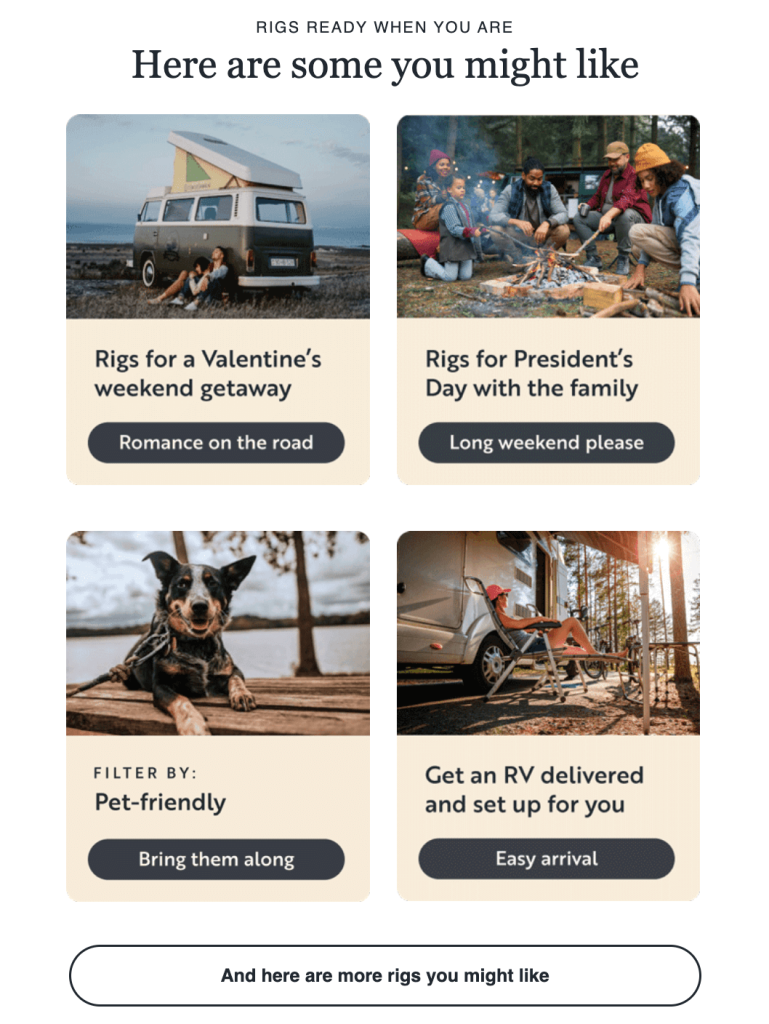
5. Use predictive lead scoring to identify and target potential customers effectively
It’s much easier to target leads effectively when you understand why they sign up for your newsletter and if they are likely to convert. Predictive techniques analyze data like demographics, location, job title, and more to help you spot high-quality leads and work on relevant email content for them to drive conversions.
Imagine that a startup founder subscribed to your email marketing newsletter after attending a webinar on GenAI for email localization. Predictive models can analyze the founder’s engagement patterns and previous interactions to forecast if this subscriber is likely to invest in email localization. If conversion potential is high, the founder gets an email with case studies and a consultation offer. If this potential is low, they get an email with relevant educational materials like e-books or white papers (AI versus manual translation comparison included) to nurture interest.
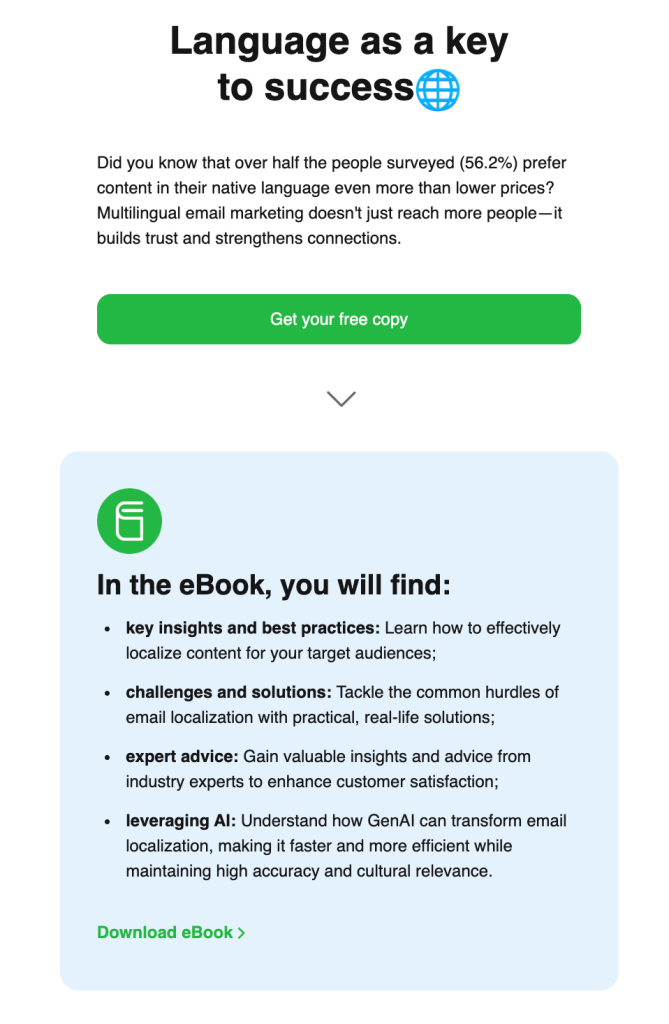
Implementing predictive email marketing in your strategy: First steps
Take a look at the following tips on the first steps to implementing predictive email marketing.
1. Gather and analyze data
We suggest you start by collecting and analyzing data about your email subscribers. A detailed dataset with variables like buying history, engagement, and behavior will help your predictive models find patterns and make likely assumptions.
The good news is that you already monitor customers’ interactions with your company by using the marketing platform of your choice. To transform this raw data into meaningful insights, consider using Coupler.io. This reporting automation platform enables you to
- Consolidate data from over 60 business data sources, including marketing channels, email platforms, and CRM systems, into a single source of truth.
- Create custom dashboards that track your predictive metrics alongside actual performance.
- Automate regular data updates to ensure your models remain accurate.
- Transform raw data through filtering and aggregation to focus on the metrics most relevant to your predictions.
- Visualize your data using predesigned dashboard templates for instant analytics. For example, if you use Mailchimp for your email campaigns, analyze their performance with the help of this ready-to-use email marketing dashboard.
As a result, you can create a comprehensive dataset that serves as the foundation for your predictive models. For instance, a predictive churn dashboard that identifies subscribers likely to unsubscribe, alongside metrics showing the effectiveness of your re-engagement campaigns. This gives you a visual overview of both predicted behaviors and actual outcomes, helping you refine your models over time.
2. Select the tools to work with
At this stage, you will need to use ML algorithms to create predictive models that will analyze your customers’ data and find patterns in it to make predictions about their future behavior. You can pick from a variety of tools for predictive analytics (e.g., Google Analytics, Salesforce, or Mailchimp), but it’s vital to evaluate your specific requirements and budget to make the right choice.
3. Monitor and optimize
Predictive analytics is a great tool, but it’s not flawless. You will need to constantly monitor your model’s performance and optimize it. Your subscribers’ preferences and behavior change over time, so it’s important to ensure that the predictions you get are still relevant. You can do this by reviewing your key email marketing metrics, gathering subscribers’ feedback, and making adjustments based on the data.
Wrapping up
Thanks to predictive email marketing, you can make likely forecasts about your subscribers’ future actions without analyzing tons of data manually. Here are some predictive marketing success stories for you to consider.
- With more than 500 million listeners, Spotify gathers data about users’ playback history, preferences, and information like genres and tempo to understand listening habits and offer personalized playlists.
- Jumbo, a lottery technology provider, got a 158% conversion boost after offering AI-powered recommendations for two months.
- IDT, a company that provides communications and payment services, used predictive analytics to personalize messages based on customers’ past behavior and language preferences. As a result, they achieved a 17% higher customer lifetime value.
Predictive email marketing is not a “set it and forget it” solution, so you will still have to monitor and optimize your predictive models to adjust them to subscribers’ changing behavior and preferences. By doing it right, you can forecast trends in the industry, offer personalized email content, and spot recipients who are ready to unsubscribe from you so you can retain them.

